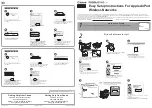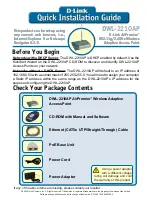
255
ORiN
B
XML Interface Specification
This specification describes the AP-2500’s XML Interface. Before reviewing this specification, note the following:
•
This specification refers to sample HTML files written in JavaScript that illustrate the XML commands (they
build an XML object that is sent to the AP). These files are included on the installation CD in the
Docs/samples/
folder.
— To use the sample files, open each one with a text editor (such as Notepad) and change the
APIPADDR
variable to match your AP’s IP address in the following statement:
var usgAddr = "http://APIPADDR:1111/usg/command.xml"
— Before using the sample files, confirm that the
XML Interface
is enabled and the
XML Sender IP
Address
equals the IP address of the computer from which you will send the XML commands (these
parameters are located in the
PublicSpace
>
AAA
>
Basic
screen).
— Within the sample files, the term
USG
is synonymous with
AP
.
— These sample files can only be run from the AP’s Ethernet side; you can
not
use these files on a wireless
client (subscriber).
— These sample files are provided for illustration and testing purposes only. Proxim provides no guarantee
that these files will function error-free.
•
PMS features are not supported by the AP-2500 at this time.
This specification covers the following topics:
•
AP-2500 XML Communication Overview
•
XML Query String Command Format
•
XML Response Form Format
•
AP Command Reference
•
External Authentication Procedure (Detailed)
AP-2500 XML Communication Overview
The AP uses XML (eXtensible Markup Language) to communicate with a network device and obtain information about
current users. XML is a newer, more elegant way to use custom web content. XML is an open standard that is tied
closely into the HTML standard. XML is maintained by the World Wide Web Consortium (W3C). See
http://www.w3.org/
for more information on W3C and XML. Also, see RFC 3470 at
http://www.rfc-editor.org/
.
The XML interface allows the AP to accept and process XML commands from an external source. XML commands are
sent from the external device in the form of an encoded query string. The AP parses the query string, executes the
commands specified by the string, and returns data to the system that initiated the command request.
NOTE:
You can use XML commands with either Internal (IWS) or External (EWS) authentication. You must use XML
for EWS authentication; it is optional for IWS authentication.
















































